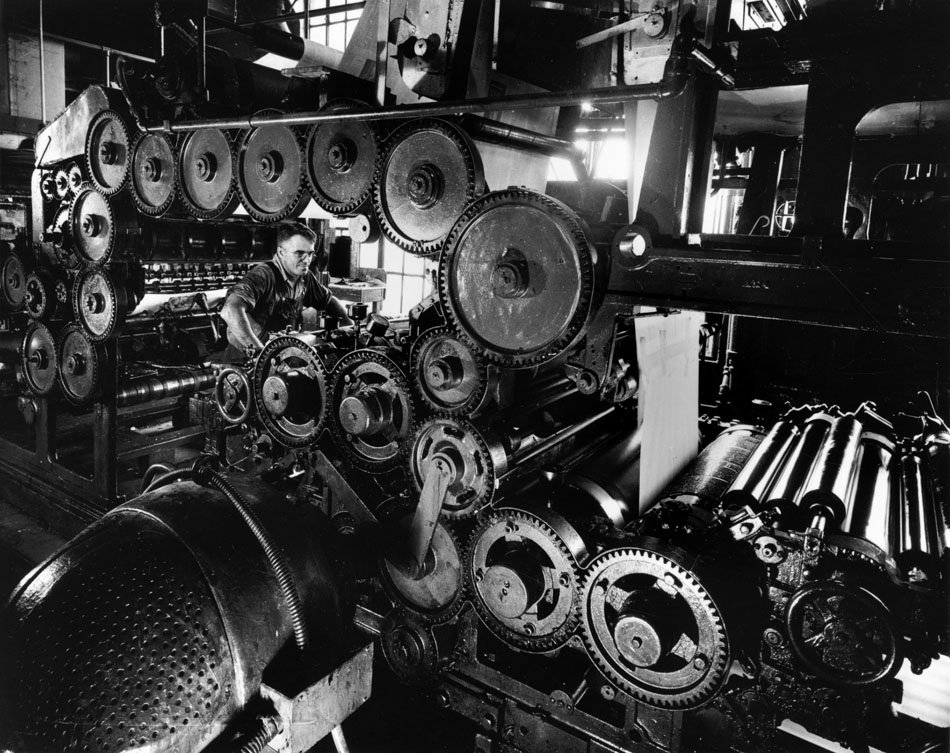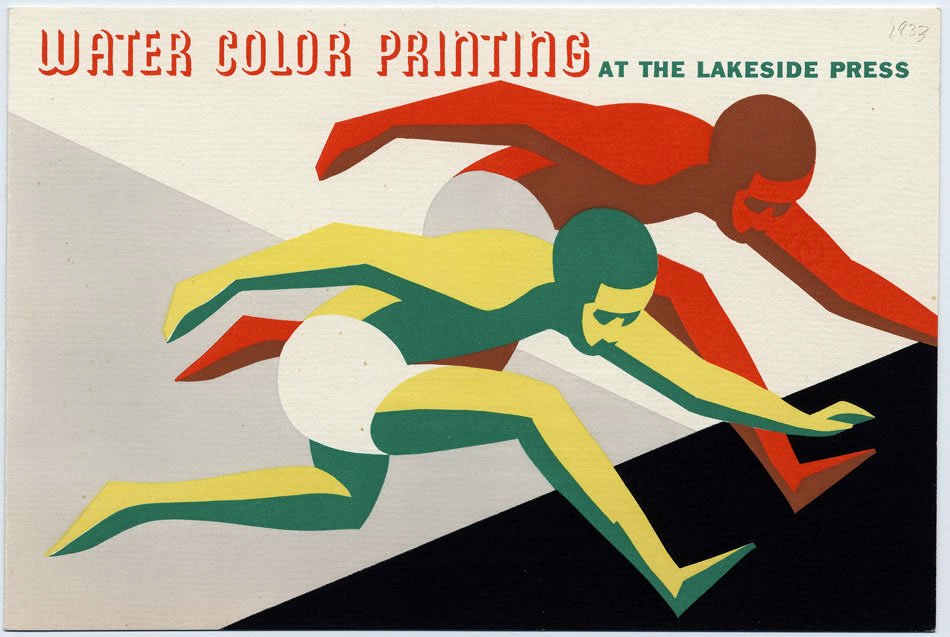Early Advances in Technology
RR Donnelley's position as the printing industry's leader depended on a continuous program of research and development. RR Donnelley initiated its own "R and D" as early as 1917, when Press D-2, a sheet-fed letterpress in use since the previous century, was outfitted with plate cylinders and a web-fed paper feeder. After months of trial and error, D-2 was printing 6,000 rotary impressions an hour as compared to 3,600 sheet-fed impressions.
In 1932 RR Donnelley engineers pioneered advances in offset lithography to improve halftone plates. Later that year, the company acquired exclusive rights to a patent for a lithographic halftone etching method that utilized a sensitized photographic plate. This led to RR Donnelley's patented Deeptone process, one of its most important trademarks of that period. Deeptone plates enabled coated papers to be printed with finer screens, which made for better tonal values and more faithful reproductions, especially large-format illustrations and photographs.
Three years later, in 1935, when publisher Henry R. Luce wanted to inaugurate a glossy weekly picture magazine to be called Life, RR Donnelley developed a method to dry ink on machine-coated paper by means other than absorption. The breakthrough came with a new process called heat-set printing-company engineers introduced a ceramic cup (and later a heater) to contain and control a flame directed over the web-fed paper as it passed through the presses at high speeds.
Rolling off RR Donnelley's heat-set printing presses, Life was soon America's largest-circulating magazine, guaranteeing advertisers a distribution of 5.2 million copies a week by 1947. That same year, RR Donnelley built a new facility in Chicago, the South Plant, dedicated entirely to the Life account. Because the magazine continued to grow, RR Donnelley never knew exactly how many copies it would print in a given week. "We simply printed as many copies as possible," RR Donnelley's company magazine reported, "right up to the moment when the next issue was ready for the presses."



